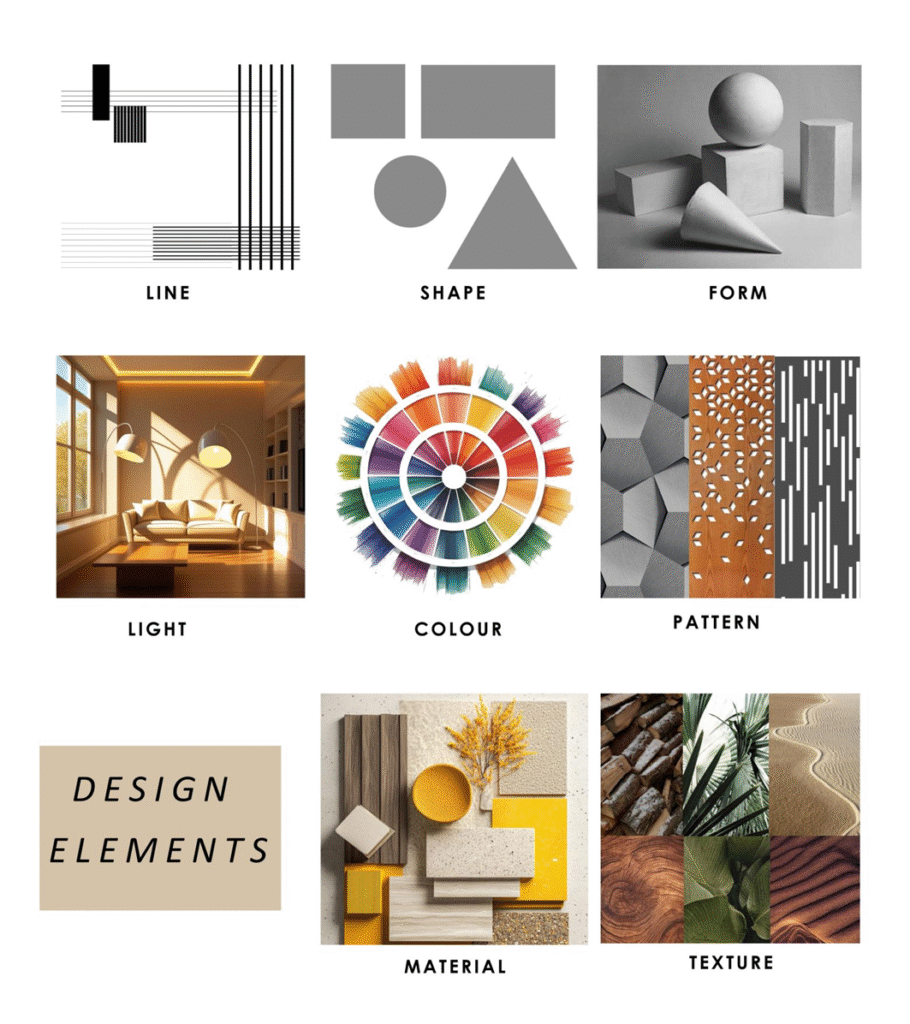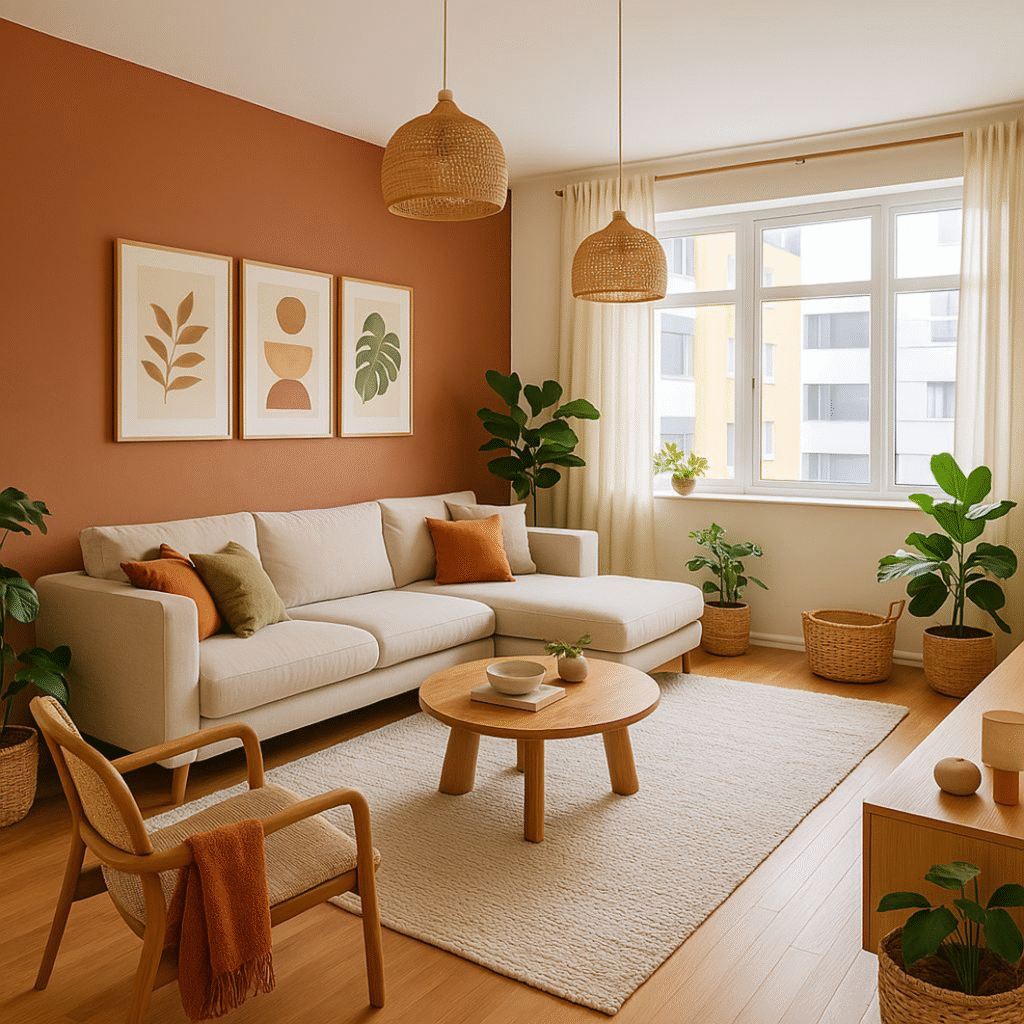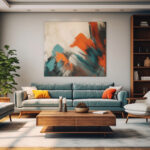Interior design is the art and science of enhancing the interior of a space to make it more functional, aesthetically pleasing, and emotionally supportive for the people who use it. It goes far beyond simply choosing colors or arranging furniture.
At its core, Interior Design involves:
- Planning layouts —for efficiency and comfort.
- Choosing — materials, colors, lighting, and textures to create a specific mood or vibe.
- Integrating architecture and human behavior—to ensure spaces are safe, sustainable, and supportive of everyday life.
Interior Design vs. Interior Decoration:
Both Interior design and Interior Decoration are often used interchangeably, but they refer to different aspects of shaping a space.
Interior Decoration focuses on enhancing the visual appeal of a space through furniture, color schemes, textiles, and accessories. It’s about style and ambiance, without making structural changes.
Interior Design is more comprehensive—it includes analyzing the requirements, concept development, spatial planning, structural changes (In case of renovation), spatial – designing and detailing, lighting, ergonomics, acoustics, and compliance with safety regulations.
A well-designed Interior can:
- Support mental well-being through thoughtful use of light, color, and space.
- Reflect personal or brand identity.
- Improve productivity and comfort.
- Promote efficiency and sustainability.
The Pillars of Interior Design —Design Elements
Interior design is built on core elements that work together to shape a space’s look, feel, and function. Understanding these gives a designer’s lens—you’ll start to see why a room “works” (or doesn’t!).
Here are the 8 essential elements of Interior Design:

1. Line – Guides the eye. Horizontal = calm, vertical = height, diagonal = movement.
2. Shape – The shape of objects—geometric (structured) or organic (natural).
3. Form – The foundation—how a room is arranged and used.
4. Light – Natural or artificial; affects mood, function, and highlights design.
5. Color – Sets tone and emotion. It is used wisely for balance and harmony.
6. Texture – How things feel (or look like they feel). Adds depth and interest.
7. Pattern – Repeating designs that bring rhythm, energy, or focus.
8. Material – The substance things are made of (wood, metal, glass, fabric, stone).
A successful Interior Design weaves these elements into a unified whole.
Think of them like ingredients in a recipe—each one contributes something unique, but they must blend in balance to create the perfect “flavor” of a space.
Can you design well without knowing the basics?
While creativity is essential, knowing the basics of Interior Design gives the framework to turn ideas into functional, balanced, and visually pleasing spaces. Without them, a design may feel incomplete or lack harmony.
The key rules every designer follows— Interior Design Basics
Interior design basics are the core rules that guide creating a balanced, functional, and aesthetically pleasing space. These basics act as a framework to make any interior work well both visually and practically.
Basic rules of the Interior Design Course are:
Functionality – Designing for practical use and comfort, not just looks.
Space Planning – Arranging furniture and pathways for easy movement.
Balance – Distributing visual weight evenly for harmony.
Proportion & Scale – Keeping furniture and decor in the right size relationship to the space.
Harmony & Unity – Ensuring all elements work together cohesively.
Focal Point – Creating a main feature that draws the eye.
Rhythm – Using repetition, patterns, and visual flow to guide movement through the space.
Proper Lighting – Layering natural, ambient, task, and accent lighting.
Color Harmony – Using a coordinated palette that supports the mood of the space.

From the figure, identify the remaining key design basics…….
Interior Design Elements and Basics — At a Glance
Design elements are the ingredients of a space—color, light, texture, shape, and pattern.
Design basics are the recipe—balance, proportion, harmony, and function—that tells you how to combine those ingredients for the best result.
In short, elements are what you have, basics are how you use them.
Ever walked into a room and instantly felt calm, energized, or inspired?
That’s the power of interior style—it shapes not just how a space looks, but how it makes you feel.
Interior design styles are distinct ways of shaping a space, each with its own signature palette, materials, furniture choices, and overall atmosphere.
From timeless looks like Traditional and Mid-Century Modern to contemporary favorites like Scandinavian and Tropical, every style tells a story and reflects a certain way of living. These styles helps to create a cohesive aesthetic—or mix elements intentionally—to design a space that feels authentic and unique.
“Styles are not rigid rules but flexible frameworks”
While each interior design style has its own signature look, they’re not meant to be followed like strict formulas. In real-world spaces, styles often overlap—modern homes can have rustic touches, minimalist spaces can feel warm with a hint of Scandinavian coziness, and traditional settings can be refreshed with contemporary art.
The key is to understand the essence of each style, then adapt and blend them to suit one’s personality, lifestyle, and the architecture of the space.

MODERN
Clean lines, neutral colors, and minimal clutter define this style. It focuses on function, simplicity, and open spaces.

TRADITIONAL
Classic furniture, rich colors, and ornate details create a warm, timeless elegance.

CONTEMPORARY
Always evolving. A balanced blend of traditional and modern. Timeless and versatile, blending comfort with sleek, fresh looks.

INDUSTRIAL
Exposed brick, raw metal, and unfinished surfaces give this style a rugged, urban warehouse

TROPICAL/ COASTAL
Soft tones, organic textures, and airy fabrics capture the calming essence of the seaside within your home.
“Good design is all about balance. A space should feel natural, warm, and inviting.”
— Gauri Khan

MINIMALIST
Inspired by the “less is more” philosophy, it uses simple forms, muted colors, and only essential furniture.

BOHEMIAN (BOHO)
Eclectic and colorful. Layered textiles, global patterns, relaxed vibes.

SCANDINAVIAN
Bright, airy, cozy. Light wood, soft textures, and a mix of function + simplicity

RUSTIC
Natural and warm. Wood, stone, earthy colors—brings the outdoors in.
Interior Design Styles — At a Glance
Above mentioned Interior design styles represent some of the most popular and influential looks worldwide, each offering a unique mood, colour;material- palette, and personality.
Each style creates a unique mood: clean and modern, warm and rustic, or bold and eclectic. There’s no one-size-fits-all—its all about mixing and matching to reflect one’s personality.
DreamZone: Master Interior Design with Industry Experts
DreamZone offers Interior Designing Courses in Bangalore that are built around what the market needs today.
The Course cover space planning, lighting, color theory, sustainable design, and software like Auto CAD, Sketch-up, and 3Ds Max.
At DreamZone, Interior Design training goes beyond theory. Blending creativity with hands-on experience to prepare students for the real demands of the industry.
With live projects, site visits, and portfolio guidance, students gain real-world skills from day one. Strong placement support opens careers in design firms, architecture, real estate, and freelance work—making DreamZone one of Bangalore best choices for job-oriented interior design training.






